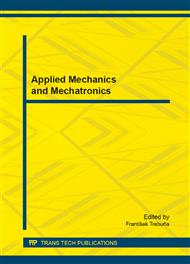p.121
p.130
p.137
p.145
p.156
p.162
p.170
p.175
p.183
Numerical Modelling of Glued Joints between Metal and Fibre Composites Using Cohesive Elements
Abstract:
The main goal of this work is to find the optimum way for numerical simulation of bonded joints using finite element analysis. The most important requirements for the model are simplicity, wide utilization (for all types of bonded joints) and efficiency. The final paragraph includes the way of determination of damage and cohesive parameters of bonded joints using cohesive surface based contact. The results of this research should be suitable for modelling of the general type of bonded joints.
Info:
Periodical:
Pages:
156-161
Citation:
Online since:
August 2014
Authors:
Keywords:
Price:
Сopyright:
© 2014 Trans Tech Publications Ltd. All Rights Reserved
Share:
Citation:


